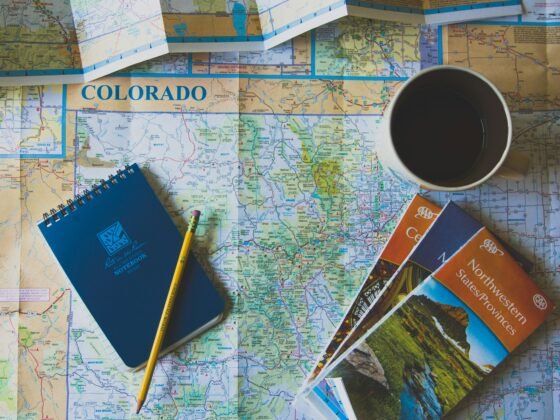There are only a few places on earth with the diverse landscapes that New Zealand has to offer the outdoor enthusiast. It’s possible to go kayaking in crystal-clear waters one day, snow skiing the next and traverse an alpine summit on the following.
While the abundance of outdoor pursuits can make choosing activities difficult, packing for each can be an even greater challenge. Each activity can demand its own set of gear, so here’s our guide to what to include in your kit bag for each on your next kiwi adventure.
Day Hiking or Tramping
New Zealand weather is notoriously fickle; bluebird skies in the morning and rain storms in the afternoon are not uncommon. This makes good layering critical.
A base layer of a Merino or polypropylene thermal top (and maybe bottoms if you’re heading to alpine country) is the foundation, and there should be a mid-layer, preferably a fleece or softshell jacket. The outer layer needs to be a breathable and waterproof rain jacket. Cold mornings and evenings make a good down jacket, gloves and a warm hat essential.
The right footwear is one of the most important decisions you will make. For short half-day hikes that don’t involve difficult terrain, trail shoes are usually sufficient. For longer hikes or when you are carrying a heavy pack, hiking boots will offer more support. Make sure that you wear them in and that they don’t come ‘brand new out of the box’ on your first hike.
Tramping’s great essential is a backpack. You’ll want something you can carry comfortably and has the features designed to keep you hiking smartly. Don’t forget a rain cover; some packs come with one built-in. Keep the other essentials in the pack and you’ll always be ready to hit the trail safely; torch, whistle, firelighter, map and GPS, knife or multipurpose tool, sunscreen and sun glasses and of course a good pre-packaged first aid kit.
Finally keep you travel documents; tickets, passport, travel insurance, credit cards, drivers licence etc in a waterproof travel wallet.
Supplies for Skiing
When winter powders New Zealand’s mountains, hiking boots get replaced by ski boots. The basic principles for packing to stay warm in the snow are the same as those for hiking – get layered.
Wear Merino or polypro thermals against the skin then a fleece or softshell jacket as your mid-layer. The most essential item of all is a windproof and waterproof outer layer – ideally a good ski jacket and ski pants – because nothing will dampen a good day on the slopes quite like getting damp.
The cold tends to hit your extremities first – feet, hands, head – so invest in quality thick socks, insulated gloves and a warm hat. Wearing a pair of thin liner gloves under your snow gloves provides an extra layer of warmth. Pocket hand warmers, which you simply flex to create heat, are another good option for an instant shot of heat to keep fingers and hands mobile. A buff will provide warmth around the neck.
Snow goggles or sunglasses are a must in the snow, and if you plan to spend hours out on the slopes, carry a small day pack – 20L to 30L – in which you can pack away layers as needed and carry snacks and sunscreen.
Packing for Paddling
Paddling on the river is a great way to enjoy the wilderness. Not only is it fun and exciting, but it can also grant you access to areas you might not otherwise be able to reach by foot — especially if you spend more than one day on the river. But, as with any outdoor activity there is some essential equipment that will make your adventure, safer and more enjoyable.
Note: Dress for the water temp, not the air temp—a capsize (and hypothermia) can happen suddenly; avoid cotton, which will chill you. Quick-drying clothing is a must.
Warm weather/water Kayaking
- Swimwear or shorts or convertible pants
- Rashguard top or moisture-wicking T-shirt or long-sleeve shirt
- Neoprene footwear
- Sun-shielding hat
- Bandana or buff
- Fleece jacket or vest (weather dependent)
- Spray jacket or rain jacket and pants (weather dependent)
Additional clothing for cold weather/water
- Dry suit or top (very cold water) or wetsuit or top (cold water)
- Long underwear (not needed with a wetsuit)
- Synthetic or wool socks (to wear under booties)
- Wool/synthetic cap
Bringing it all together
If you’re coming to New Zealand with a varied list of adventures in mind, versatility is key in your suitcase. Pack so that you can layer in any circumstance – a night in the mountains, a day on water, a morning on the ski slopes.
Merino thermals are the Swiss army knife of dressing for the outdoors, providing multiple options. While you should bring a breathable waterproof and windproof rain jacket that’ll cope with the worst conditions – it’s better to be overprotected than under protected.
Versatile hiking shoes might be preferable over heavy hiking boots if tramping is just one component of your plans, and quick-drying shorts and shirts will be your best friend on all your adventures. Trousers with legs that zip off, converting them to shorts, can be good when you’re packing with multiple active possibilities in mind.
As a final word don’t forget the more mundane but equally as important travel necessities and paperwork.
- Flight, train and bus tickets
- Valid Passport and drivers licence. Laminated copy of your passport ID page.
- Travel Security Belt: The best way to keep your money hidden.
- Travel Insurance information, home contact details, important health information as part of a laminated card.
- Address of your first hostel / hotel / accommodation
- Debit can credit cards as well as some NZ Dollars.
- Half a dozen passport photos can also be a helpful addition.












